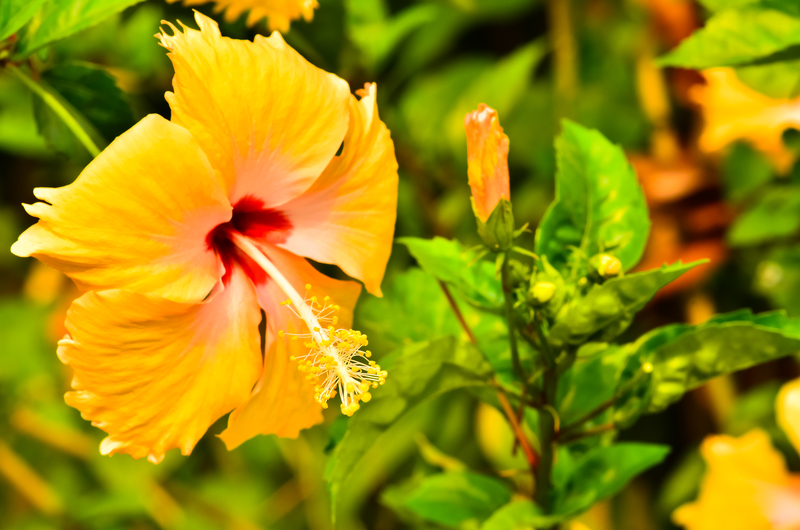Hedge Trimming Artistry: Exciting Shapes and Techniques Revealed
Posted on 21/06/2025
Hedge Trimming Artistry: Exciting Shapes and Techniques Revealed
Hedge trimming artistry is not just a gardening routine--it's a creative journey that transforms ordinary greenery into living masterpieces. Whether you are nurturing a humble boxwood hedge or aspiring to craft elaborate topiary sculptures, the art of hedge trimming offers endless possibilities. From classic geometric forms to intricate animal shapes, this comprehensive guide unveils the exciting shapes and advanced techniques that define modern hedge artistry. Explore hedge design, discover expert tools, and learn time-tested methods to cultivate eye-catching landscapes.
Why Hedge Trimming Is an Art
Hedge trimming artistry goes beyond maintenance; it allows gardeners to express creativity while enhancing curb appeal. Immaculately shaped hedges provide structure, privacy, and aesthetic value to outdoor spaces. Over centuries, hedge sculpting has evolved into a unique blend of horticulture and artistic expression.
- History of Hedge Trimming: Dating back to ancient Roman and French gardens, trimmed hedges symbolized order and sophistication.
- Modern Appeal: Today, creative hedge shapes enliven parks, estates, and home gardens worldwide, reflecting contemporary tastes and traditions.

The Basics of Hedge Trimming
Before diving into advanced artistry, it's essential to understand the fundamentals of hedge maintenance:
Essential Tools for Hedge Trimming
- Manual shears: Ideal for precision shaping and light trimming.
- Electric hedge trimmers: Fast and efficient for larger or mature hedges.
- Ladders and safety gear: For reaching tall or intricate sections safely.
- String lines and stakes: Useful for outlining straight edges and geometric forms.
Key Techniques for Healthy Hedges
- Tapering: Always trim hedges wider at the base. This ensures sunlight reaches the lower branches, keeping growth full and even.
- Regular Trimming: Frequent shaping encourages denser foliage and maintains crisp edges.
- Sanitizing Equipment: Cleaning blades prevents the spread of plant diseases.
- Timing: Trim most hedges during late spring or early autumn to minimize stress and promote vigorous growth.
Exciting Hedge Shapes: From Geometric to Whimsical
The true artistry in hedge trimming lies in sculpting captivating shapes. Below are some of the most popular--and ambitious--topiary forms:
Geometric Mastery
- Box Hedges: Neat, rectangular panels or squares commonly found in formal gardens.
- Spheres: Challenging but rewarding, round shapes project balance and harmony.
- Cones and Pyramids: These striking forms add height and drama, ideal for entrances and corners.
- Spirals: With the right topiary framework, spirals create a sophisticated, whimsical effect.
Nature-Inspired Designs
- Cloud Pruning: Also called Niwaki, this Japanese technique creates soft, rounded lumps that resemble floating clouds, evoking serenity and movement.
- Animal Topiary: Take inspiration from famed gardens to sculpt peacocks, rabbits, or even mythical creatures from yew or privet hedges.
- Naturalistic Waves: Undulating forms bring organic motion to borders while blending seamlessly with other garden elements.
Innovative and Thematic Hedges
- Archways and Tunnels: Interwoven branches provide magical passageways, perfect for garden entrances or secret gardens.
- Letters and Numbers: Personalized initials, house numbers, or meaningful dates can be stylishly shaped with some patience and creativity.
- Seasonal Themes: Craft shapes to reflect holidays, such as hearts for Valentine's Day or stars for festive celebrations.
Advanced Hedge Trimming Techniques
Ready to elevate your hedge trimming skills? Incorporate these advanced approaches to create living works of art:
Topiary Frameworks
- Wire Frames: Place wire or metal frameworks around new growth for guiderails. Perfect for intricate shapes or beginners aiming for animal sculptures.
- Cardboard Stencils: Trace unique forms (like alphabets) onto cardboard, cut them out, and use as a reliable outline while you trim.
Layered Shaping
- Gradual Shaping: Instead of drastic cuts, develop complex forms layer by layer across seasons, allowing for natural regrowth and formative stability.
- Interplanting: Combine plants of differing leaf textures and colors for visually dynamic or even multicolored sculptures.
Shadow and Light Play
- Strategic Trimming: Take advantage of sunlight and shadow to accentuate edges, patterns, and three-dimensionality--especially in large or public spaces.
Step-by-Step: How to Create a Hedge Masterpiece
- Choose Your Plant: Select hardy species with dense growth such as boxwood, yew, privet, or holly. Consider conditions like sunlight, soil, and available space.
- Decide on Shape: Start with simple forms if you're a beginner. Use inspiration from existing gardens or online hedge artistry galleries.
- Prepare Tools and Work Area: Ensure shears are sharp and clean. Set up string guides or frames as needed. Wear gloves and goggles for safety.
- Rough Trim: Begin by outlining the general shape, removing only what's necessary to define your structure.
- Refine and Detail: Go back over your work, systematically perfecting curves, angles, or fine details.
- Step Back Often: Frequently inspect your hedge from a distance to maintain perspective and symmetry.
- Care for the Hedge: Water, fertilize, and monitor for pests or disease to keep foliage lush and responsive to trimming.
Maintaining Artistic Hedges Year-Round
Creating a striking topiary or hedge sculpture is only half the journey--maintaining its beauty requires regular care:
- Frequent Light Trimming: Light, routine cuts encourage dense regrowth and prevent the hedge from becoming unruly.
- Feeding and Mulching: Annual applications of mulch and balanced fertilizer keep root systems strong and resist stress.
- Protection from Extreme Weather: Use covers or windbreaks in winter where frost or heavy snow could damage delicate shapes.
- Pest and Disease Monitoring: Regular inspections minimize risks from pests like spider mites or fungal blights which can compromise shapes.
Common Mistakes and How to Avoid Them
Mastering hedge trimming artistry requires patience and attention to detail. Here are frequent pitfalls to avoid:
- Incorrect Angling: Trimming vertically causes the hedge top to overshadow the base, leading to bare lower branches. Always maintain a gentle taper.
- Neglecting Tools: Dull or dirty blades make uneven cuts and can injure plants. Clean and sharpen regularly.
- Over-Pruning: Removing too much at once stresses plants and may damage new growth. Trim small sections gradually.
- Ignoring Plant Health: Remember, artistry depends on healthy, vigorous plants. Address nutrient deficiencies, pests, or diseases immediately.
The Environmental and Aesthetic Value of Artistic Hedges
Practicing hedge trimming artistry doesn't just beautify your surroundings--it also offers environmental advantages:
- Wildlife Habitat: Hedges provide shelter and nesting spots for birds, insects, and small mammals.
- Wind & Sound Barrier: Dense, trimmed hedges can reduce noise and protect against harsh winds in exposed areas.
- Enhanced Property Value: Well-maintained and artistically shaped hedges elevate landscapes and may increase property values.
- Seasonal Interest: Topiary and creative forms create focal points that delight visitors throughout the year.
Hedge Trimming Artistry in Public Spaces
Hedge sculpting graces the grounds of many famous estates and parks:
- Levens Hall, England: Home to some of the oldest and most elaborate topiary displays, featuring geometric and animal forms.
- Versailles, France: Iconic parterre hedges demonstrate formal symmetry and grandeur on a grand scale.
- Huntington Gardens, USA: A showcase of whimsical and geometric hedge shapes in themed gardens.
Visiting these sites provides inspiration as well as practical insight into the enduring allure of hedge trimming artistry.

Getting Started: Tips for Beginners
Starting your hedge design journey is fun and rewarding. Here's how to begin with confidence:
- Start Small: Begin with manageable hedges and simple shapes to build your skills.
- Practice Patience: Masterpieces develop over months or years. Progress steadily, enjoying the journey.
- Join Online Communities: Share your progress and seek advice from experienced topiary artists and garden enthusiasts.
- Attend Tours and Workshops: Participate in local gardening events to learn from professionals and gain hands-on experience.
Conclusion: Embrace the Art of Hedge Trimming
Hedge trimming artistry unlocks a world of creative expression and botanical beauty. By experimenting with exciting shapes and advanced techniques, you can transform everyday greenery into captivating focal points. Whether you're shaping simple spheres or embarking on detailed topiary, remember: with vision, skill, and patience, your living canvas will flourish season after season.
So gather your tools, draw inspiration from renowned gardens, and start your own journey into the creative world of hedge sculpting. Every clip brings you closer to a breathtaking landscape that reflects your unique personality and passion for nature.
- Ready to discover more? Explore guides on topiary, hedge species selection, and expert trimmer reviews. Join the growing community of garden artists and bring your creative visions to life today!



